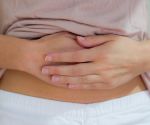Before ovulation, waking temperatures typically range from about 97.0 to 97.5 degrees Fahrenheit, and after ovulation, they rise to about 97.6 to 98.6 degrees. Temperatures will remain elevated until the next period, about two weeks later. In case the woman becomes pregnant, they remain high for more than eighteen days after ovulation.
The important concept to understand is the pattern of lows and highs that your temperatures exhibit. You will find that your temperatures before ovulation fluctuate in a low range, and the temperatures after ovulation fluctuate in a higher range. The trick is to see the whole, and not to focus so much on the day-to-day changes. Temperatures typically rise within a day or so after ovulation, indicating that ovulation has already occurred.
The factors that can disrupt your waking temperature include: Fever Alcohol intake the night before Less than three consecutive hours of sleep before taking the temperature Taking the temperature at a substantially different time than usual Using an electric blanket that you normally don't use

More About this Book
Our Bodies, Ourselves: A New Edition for a New Era
Continue Learning about Menstruation
Important: This content reflects information from various individuals and organizations and may offer alternative or opposing points of view. It should not be used for medical advice, diagnosis or treatment. As always, you should consult with your healthcare provider about your specific health needs.




